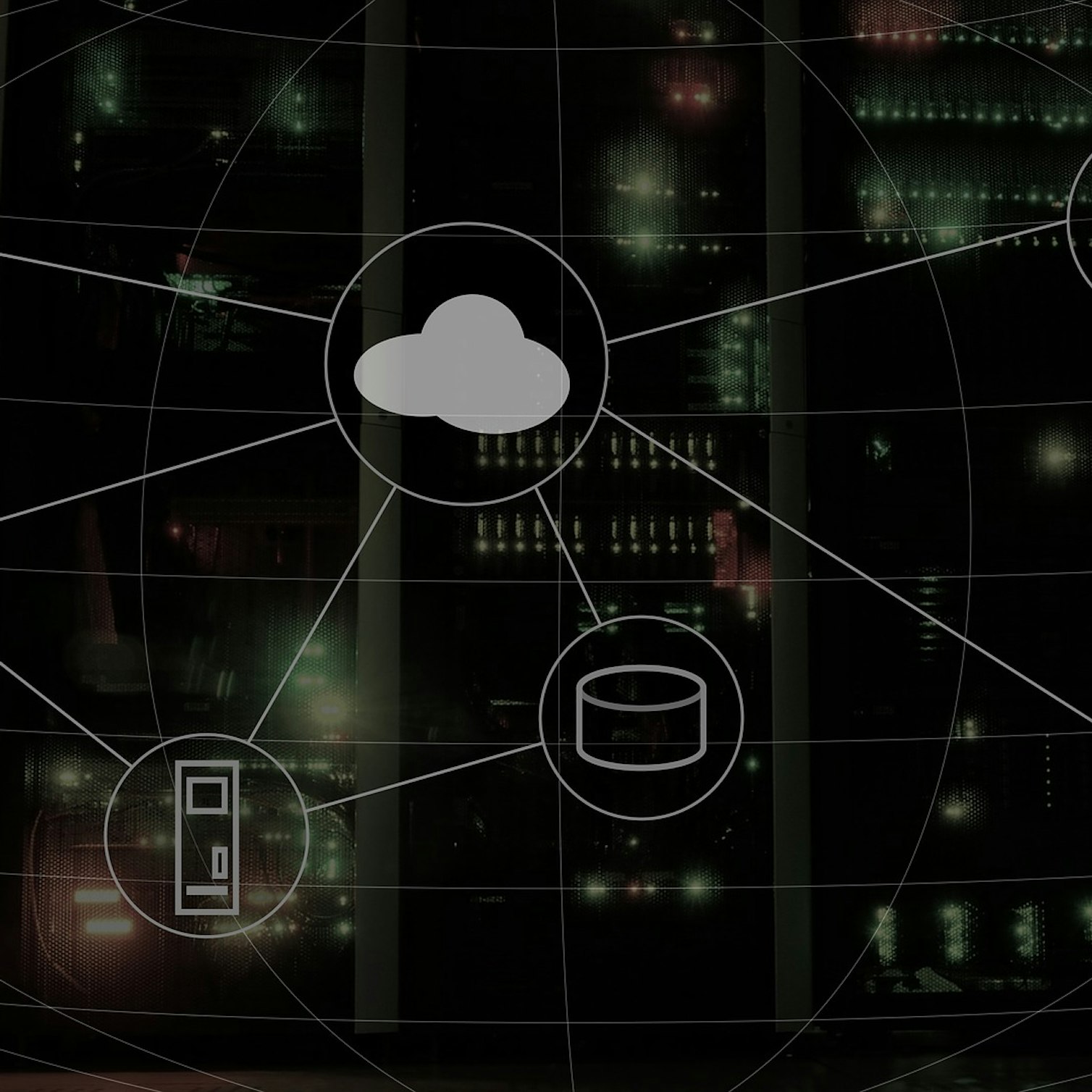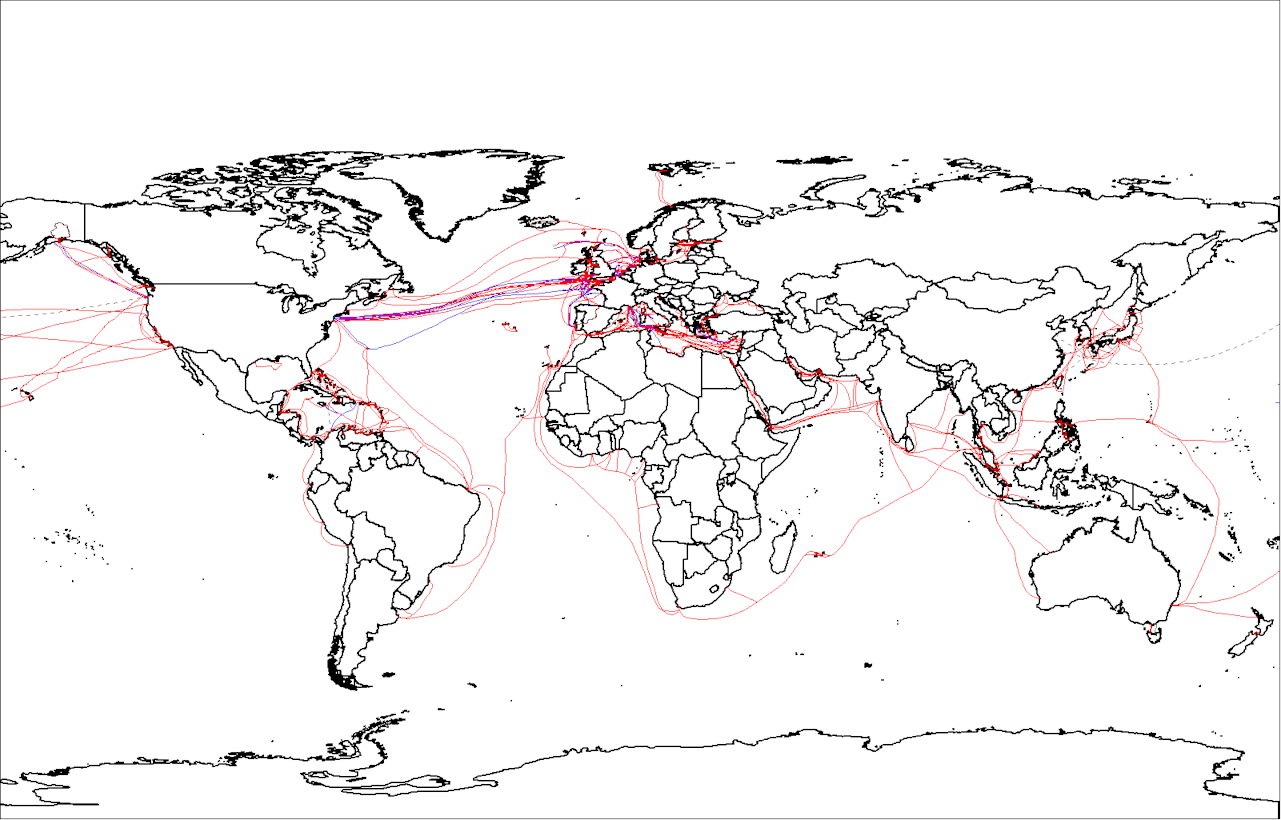- Solar energy blog
- How cloud computing is transforming the renewable energy industry
How cloud computing is transforming the renewable energy industry
Maksym Kharuk

Content
Technology trends are changing the way that industries work and innovate — energy included. The so-called fourth industrial revolution, Industry 4.0, is centered on digitalization and advanced data analytics enabled by cloud computing.
Cloud computing is the delivery of hosted IT services over the Internet. It provides computing power, applications, and data storage from remote computers and data servers using automation and virtualization. By using these remote hosted services, companies can save time and money by reducing the need for in-house computing infrastructure.
In the energy industry, companies can optimize their operations with flexible, scalable cloud-based data services without the need to invest in expensive computing systems.
Let’s look at what sets cloud computing apart from desktop tools and its advantages for energy companies.
Are you a a PV solar who wants to expedite time-to-layout and reduce LCOE? Find out the major must-haves and deal-breakers when comparing solutions for your solar team with this free guide . A handy checklist included!

How does cloud-based software differ from desktop tools?
Traditional desktop computer software must be installed on each computer station in a company’s IT network. This requires an on-site IT team to manage the installation and keep the software up to date with upgrades and patches, as well as servers to manage the data the software generates. The company also has to pay a licensing fee for each computer or user with access to the software, which can become costly for large teams.
As cloud-based software is hosted remotely, users can simply log in from a web browser. And if there is an app, it can be installed on a computer remotely and updated automatically. Cloud applications can provide fast access to data and automatic backups to remote servers, ensuring the data is saved even if a computer crashes.
Users can also access the data from any device, rather than being tied to a single workstation. This can reduce a company’s IT expenses and make its workforce more agile.
Advantages of cloud computing in renewable energy
Why should cloud computing be on the radar of renewable energy companies? Cloud-based solutions can help companies to become more resilient and competitive in a changing landscape, where sustainability is becoming increasingly important. With the large volumes of data that energy companies generate from their operations, they are well suited to reap the benefits of transitioning from desktop to cloud-based systems.
Cloud-based solutions offer benefits for every part of the energy supply chain, from upstream and midstream to downstream, increasing efficiency while lifting profit margins.
What are some of the ways energy companies can make use of cloud software to generate and store their data?
Capital investment. Developers can use automated cloud-based tools to streamline projects, aid in decision making, and reduce waste.
Infrastructure monitoring. Electricity producers can monitor and optimize their solar panels, wind turbines, batteries, and other equipment to ensure they are functioning correctly and identify repairs that are required before they become major issues.
Forecasting. Energy suppliers can predict changes in supply using weather forecasts and other data, and project customer demand trends to ensure the system remains balanced. This can help them become more agile in responding to changing trading conditions in electricity markets.
Customer services. Retail providers can use insights from advanced data analytics to increase customer engagement. They can also use scenario modeling to optimize and test improvements to the customer experience.
Compliance. Cloud data backup and recovery enables companies to comply with energy market regulations more easily. Automated analytics and reporting make it easier for companies to compile the information they need to provide to regulators, freeing up staff for other tasks.
Corporate operations. Insights from the data a company generates can increase productivity in its accounting, human resources, and supply chain functions.
How are renewable companies using cloud software in 2022
The ability of cloud-based systems to provide real-time monitoring of assets is key for energy companies looking to speed up their operations.
Companies like GE Renewable Energy use custom asset management software that collates data from Internet of Things (IoT) sensors and automatically delivers insights to detect issues, predict failures, and respond quickly with repairs and maintenance.
Cloud-based machine learning algorithms can identify trends and provide insights to determine the best times to schedule maintenance to reduce downtimes and manage inventory, reducing the chances of unexpected outages occurring.
Companies like Billion Electric provide solar cloud solutions that combine smart meters and Internet gateways with cloud software to create intelligent monitoring systems. These can be used to track solar generation and identify problems, ensuring that solar installations operate at the optimum level to maximize generation and increase return on investment.
The benefits of cloud computing - for our company and for the customer
Today, we can mainly distinguish 3 types of cloud computing:
SaaS (Software as a Service): The provider offers the software or applications in the cloud through the internet. Users access these applications through APIs or the web, without the need to install, manage or update the software. Some well-known examples of SaaS applications are Gmail, Slack, or RatedPower.
PaaS (Platform as a Service): The provider eliminates the physical part of the infrastructure, providing access to cloud environments with tools to create, develop, manage and distribute applications. As examples of PaaS platforms we find some known as AWS Lambda, Heroku or Google App Engine.
IaaS (Infrastructure as a Service): Provides hardware infrastructure quickly and cheaply, the client only pays for the services they use, forgetting about their installation and maintenance. The best known IaaS providers today are Amazon Web Services, Microsoft Azure and Google Cloud.
Choosing cloud platforms entails a series of advantages, both for the providers of these platforms and for their clients, among all of which we can highlight four:
Maintenance: Companies no longer need to spend time and resources repairing and maintaining both equipment and software. With a computer with Internet access and a web browser, you have everything you need to work with them.
Mobility: Access from anywhere and from any device, information is no longer only available in the office and gives way to mobility, anytime, anywhere. Plus, it adds a collaborative “sharing” experience for clients.
Software updates: Customers are guaranteed to always have the most recent and optimized versions of the software, without having to worry or dedicate resources to maintaining the applications.
Security: All information is no longer at risk in the event of a computer failure. All information is stored in the cloud, with regular and automatic backups.
What are the risks of cloud computing?
When managing software in the cloud, certain risks must be taken into account that may not be necessarily dependent on how the infrastructure is managed. There is a shared responsibility for security, which is divided into the reliable use of the software and the appropriate use of the cloud.
In order to achieve the highest level of security in SaaS Software, it is essential to follow the good security practices provided by the cloud provider, in addition to the software itself being reliable, by integrating security measures such as having an S- SDLC (Secure Software Development Lifecycle) or a security program whose objective is that the software does not contain vulnerabilities.
The use of the cloud must be appropriate, misuse or misconfiguration of it can expose both the data stored in the cloud and the software itself to be the target of attacks. Normally, cloud providers offer guides that establish the best security practices in the use and configuration of Cloud Computing tools.
The most important points that must be managed to acquire confidence in the security of the cloud are:
Identity and access management (IAM): refers to the access privileges that are offered to the accounts and to the services of the cloud. A misconfiguration of these resources can cause illegitimate access to the entire cloud system.
Understand the concept of compliance: Certain sensitive data may be subject to strict compliance regulations such as the European Union's GDPR.
Manage life cycles: The cloud environment allows you to create new instances while leaving old instances active. These abandoned instances can be disruptive as they continue to be active without any monitoring. This is why it is necessary to manage the life cycle of the instances.
Monitoring: Having a constant monitoring and reporting system can greatly prevent the consequences of an attack, increasing the ability to identify and respond to these incidents.
RatedPower and Cloud Computing
What happens when a configuration is started on the RatedPower platform?
Have you ever wondered what happens when you upload a photo to Instagram or send a WhatsApp?
Starting a simulation in RatedPower is no different. When a user creates a new simulation, all the data entered is divided into very small bundles of information, these bundles travel from your computer to the router that you have installed at home or in the office. The router is in charge of connecting your device to the internet, and of sending that information to the destination server, which can be in the same country, on the same continent, or on the other side of the ocean, in just a few milliseconds.
The bundles with the simulation information travel from the router through fiber optics and network cables to the intermediary servers of your Internet provider, which are connected to other servers through terrestrial and submarine cables of thousands of kilometers in length to joining continents.

World map of submarine cables.
Once the message reaches the destination server, we will analyze the information packets received and send the message to our computational servers, which will be in charge of solving the simulation of the solar plant using our algorithm. Once the simulation is solved, the message will be sent back to the user's device.
How much computational power does RatedPower have?
Our IaaS platform is Amazon Web Services, currently the world leader in cloud computing. Companies like Netflix, Twitch or The Facebook Group spend millions of dollars per month to host their infrastructure on AWS.
In our case, we have the capacity to run hundreds of simulations at the same time, scaling our computing servers based on the needs of our clients and the load on the servers at any given moment. In less than a minute we can go from having only one computational server to having hundreds of them solving simulations in parallel.
Use RatedPower to optimize your solar project
Rated Power is a cloud-based software service that automates the design and engineering process for developing utility-scale solar plants. Contact us to find out how it can optimize your project.
Latest stories
Related posts
Technology and engineering
Innovation in renewable energy: Developments expected in 2025
We look at the 10 biggest renewable industry developments that are making a green future possible, including perovskite solar cells, green hydrogen, and more.
Updated 18 MAR, 25

Market analysis
Breaking down solar farm costs: Free template inside
Updated 27 SEP, 21

Market analysis
Solar energy in Australia: a 2021 market analysis
Updated 11 MAY, 21

- RatedPower
- Solar energy blog
- How cloud computing is transforming the renewable energy industry

